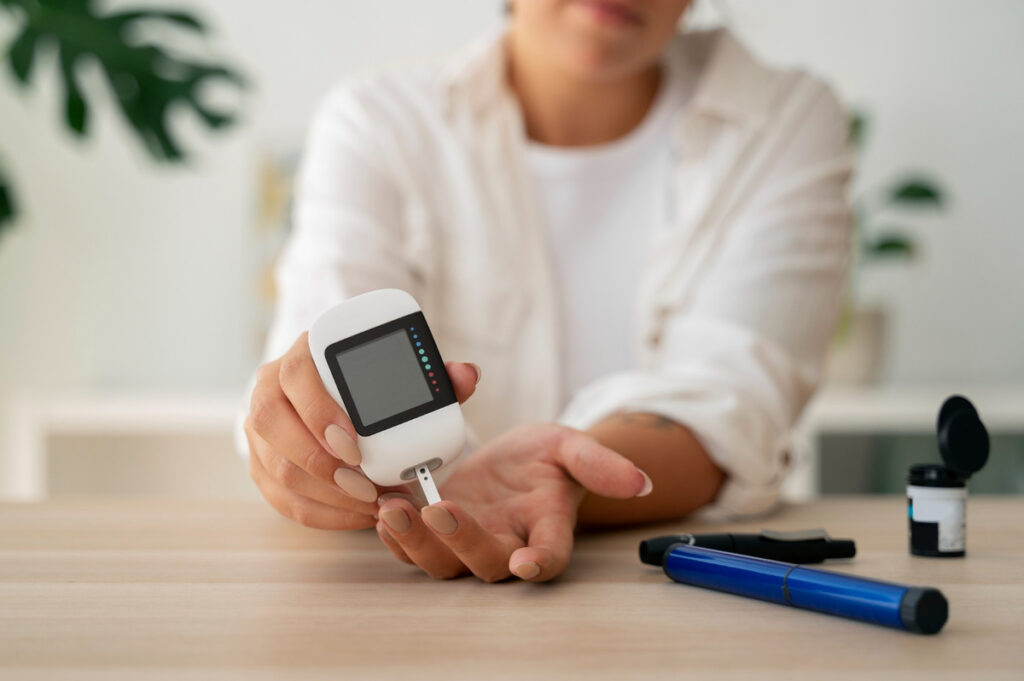Type 1 diabetes (T1D) is a chronic condition that occurs when the body’s immune system mistakenly attacks and destroys insulin-producing cells in the pancreas.
While there is no known cure for T1D at present, research is advancing rapidly, and scientists are hopeful about the possibility of finding a cure in the near future.
In this article, we will explore the current state of treatment, the promising research being conducted, and what the future holds for those living with type 1 diabetes.
What is Type 1 Diabetes?
Type 1 diabetes is an autoimmune disease in which the immune system attacks and destroys insulin-producing beta cells in the pancreas.
This leads to high blood glucose levels and a reliance on insulin for survival.
Unlike type 2 diabetes, which is more related to lifestyle factors, type 1 is typically diagnosed in childhood or adolescence and is not preventable.
The body’s inability to produce insulin means that individuals with T1D must inject insulin multiple times a day to regulate their blood sugar levels.
Current Treatments for Type 1 Diabetes
Currently, there is no cure for type 1 diabetes, but there are several treatments that allow individuals to manage their blood glucose levels effectively.
The primary treatment is insulin therapy, which is administered through injections or an insulin pump.
In addition to insulin, individuals with T1D must monitor their blood sugar levels regularly, using devices such as continuous glucose monitors (CGMs) or traditional fingerstick tests.
Advances in insulin delivery, such as the development of insulin pumps and artificial pancreas systems, have made managing blood sugar levels more convenient and accurate.
Despite these advancements, managing type 1 diabetes still requires constant attention and careful monitoring.
Promising Research and Breakthroughs for a Cure
While there is no cure for type 1 diabetes yet, several promising research areas could change the landscape of treatment.
One area of focus is immunotherapy, which aims to retrain the immune system to stop attacking the insulin-producing cells.
Immunotherapy could involve using drugs or vaccines to either halt the autoimmune attack or promote the regeneration of beta cells in the pancreas.
Another area of research is gene therapy, which involves editing genes to prevent or repair the damage caused by the immune system.
Gene editing techniques, such as CRISPR, have shown promise in animal models, and researchers are hopeful that they will one day be used to cure type 1 diabetes.
Stem cell therapy is another exciting area, where researchers are working to generate insulin-producing cells from stem cells, which could then be transplanted into individuals with T1D.
Clinical trials in this area are ongoing, and there is optimism that stem cell therapies may soon be viable.
The Role of Artificial Pancreas and Other Technologies
In addition to biological research, technology is playing a major role in improving the management of type 1 diabetes.
The artificial pancreas, which combines an insulin pump with a continuous glucose monitor, automatically adjusts insulin delivery to maintain blood glucose levels within a target range.
These systems have been in development for several years and are already providing significant improvements in diabetes management.
Future advancements could make these systems even more automated and personalized, improving both control and convenience.
Other technological innovations include wearable devices and apps that track glucose levels, diet, exercise, and insulin doses, allowing for a more holistic approach to diabetes management.
Type 1 Diabetes Cure 2025: What Can We Expect?
Looking toward the future, the prospect of a cure for type 1 diabetes is becoming more realistic.
While 2025 may not bring a definitive cure, researchers believe that significant breakthroughs could occur within the next few years.
We can expect further advancements in immunotherapies, stem cell treatments, and gene therapies.
Some experts believe that we could see trials for more effective cures or advanced treatments that greatly reduce the need for insulin.
By 2025, the combination of improved technology, better treatments, and ongoing research may allow for individuals with T1D to live healthier and more independent lives.
Lifestyle Adjustments for Managing Type 1 Diabetes Today
While the search for a cure continues, individuals with type 1 diabetes can improve their quality of life by making certain lifestyle adjustments.
Eating a balanced diet, rich in whole foods and low in refined sugars, helps manage blood glucose levels.
Regular physical activity also plays a vital role in improving insulin sensitivity and maintaining a healthy weight.
Staying hydrated and getting enough sleep are important for overall health and energy levels.
Monitoring blood sugar levels throughout the day is essential, especially before and after meals and exercise.
Mental health is also crucial; stress management techniques such as yoga, meditation, or therapy can help reduce the impact of stress on blood glucose levels.
While these changes may not cure type 1 diabetes, they significantly contribute to better daily management.
GlycoFortin is a natural supplement designed to aid in regulating blood glucose levels.
Its formula contains ingredients such as chromium, green tea extract, and Gymnema Sylvestre, which are known for supporting healthy glucose metabolism.
By improving insulin sensitivity, GlycoFortin may provide an additional tool for those managing type 1 diabetes.
While it is not a cure, it can assist in maintaining balanced blood sugar levels and supporting overall metabolic health.
If you are looking for natural ways to support your diabetes management, consider incorporating GlycoFortin into your routine.
To learn more about how GlycoFortin can support your health, visit the official website.









